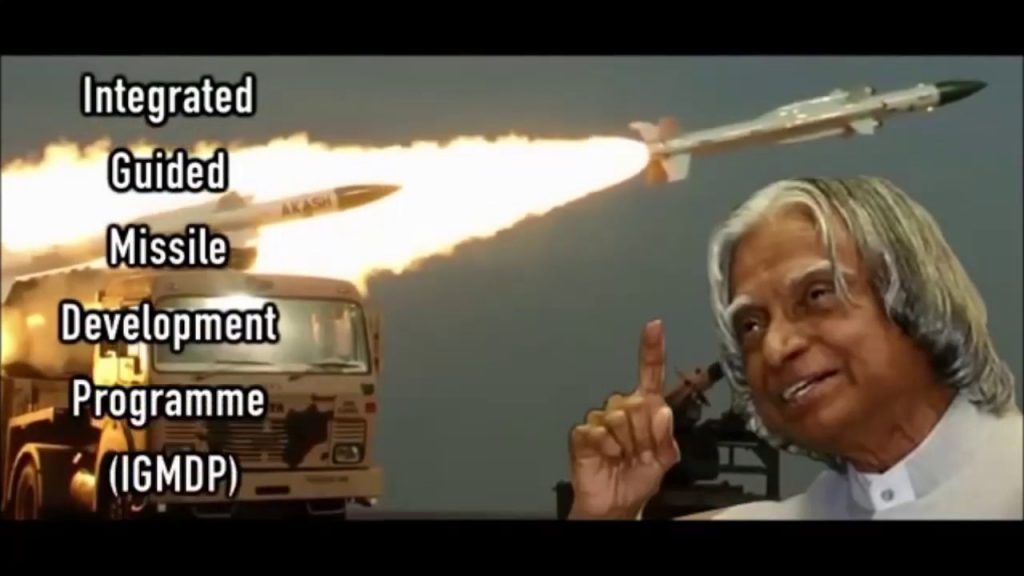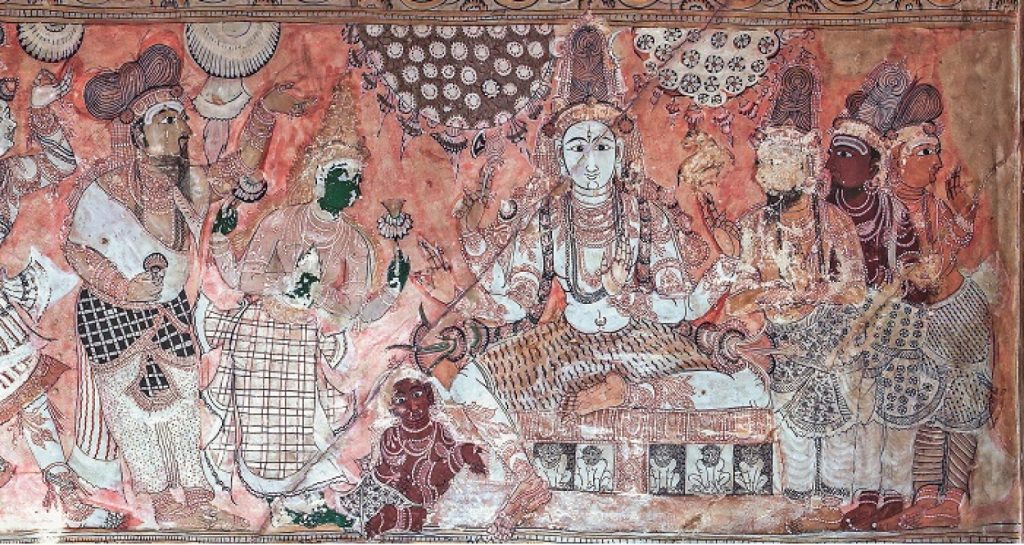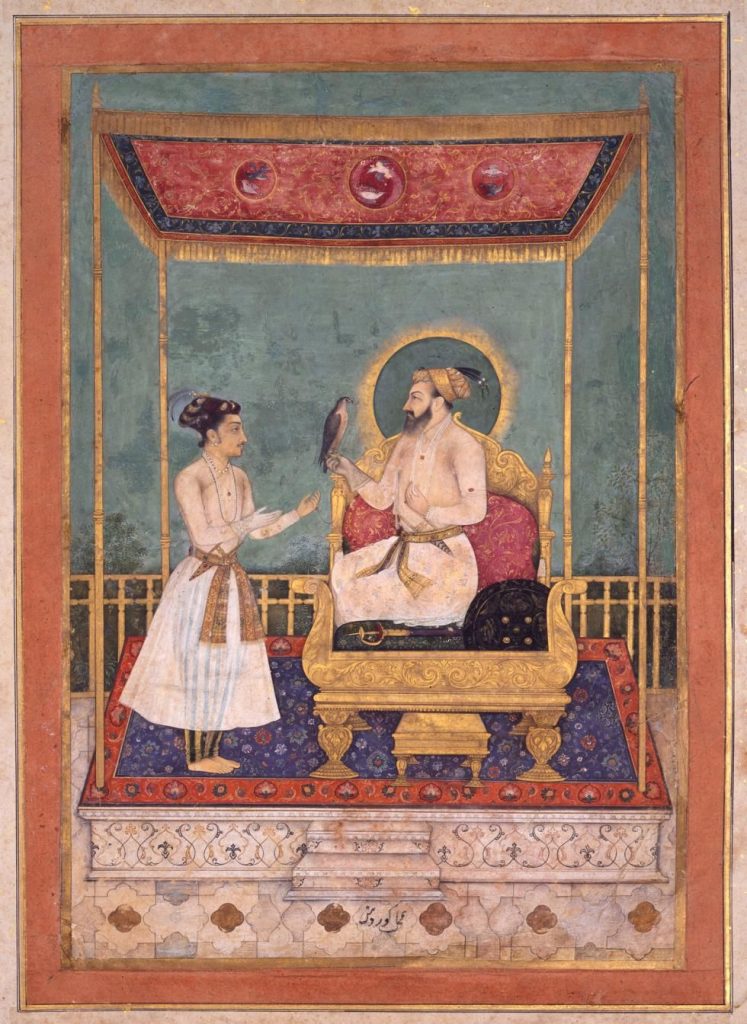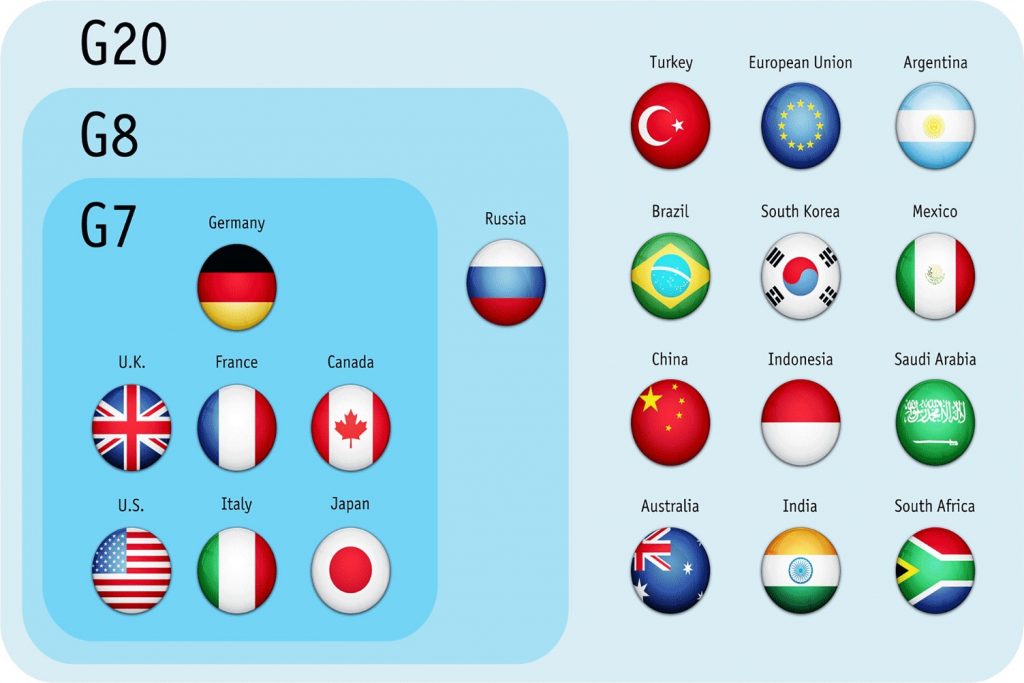Contents
- Final User Trial of NAG Missile.
- Union Minister of State for Culture and Tourism (I/C) Shri Prahlad Singh Patel virtually launches “Life in Miniature” project.
- PM to launch ‘Kisan Suryoday Yojana’ for the farmers of Gujarat.
- Dr. Harsh Vardhan holds detailed consultations with State Ministers of Science and Technology for formulating an inclusive STIP 2020 percolating down to grassroot level.
- Union Minister Dr. Jitendra Singh addresses the 1st ever Ministerial Meeting of G-20 Anti-Corruption Working Group.
- CNS REVIEWS OPERATIONAL READINESS AT SEA.
- Mid-term review for implementation of Jal Jeevan Mission held for Tripura.
- Sh. Santosh Gangwar releases revised Consumer Price Index for Industrial Workers (CPI-IW) based on new series 2016=100 from the existing 2001=100.
FINAL USER TRIAL OF NAG MISSILE.
Focus: GS 3 ;Science and Technology- developments and their applications and effects in everyday life
Why in News?
Final user trial of 3rd generation Anti Tank Guided Missile (ATGM) NAG was carried out at Pokhran range.
The missile was integrated with the actual warhead and a tank target was kept at designated range. This was launched from NAG Missile Carrier NAMICA. The missile hit the target accurately defeating the armour.
About Integrated Guided Missile Development Programme (IGMDP);-
IGMDP was brain child of renowned scientist Dr. A.P.J. Abdul Kalam.

It was intended to attain self-sufficiency in the field of missile technology.
After keeping in mind the requirements of various types of missiles by the defense forces, the program recognized the need to develop five missile systems.
The IGMDP formally got the approval of Indian government on July 26, 1983.
It brought together the country’s scientific community, academic institutions, R&D laboratories, industries and the three defence services in giving shape to the strategic, indigenous missile systems.
The missiles developed under IGMDP are:
- Short-range surface-to-surface ballistic missile – Prithvi
- Intermediate-range surface-to-surface ballistic missile – Agni
- Short-range low-level surface-to-air missile – Trishul
- Medium-range surface-to-air missile – Akash
- Third generation anti-tank missile – Nag

The Agni, which was initially conceived as a technology demonstrator project in the form of a re-entry vehicle, was later upgraded to a ballistic missile with different ranges. Dr. Kalam played a major role in the development and operationalization of Agni and Prithvi missiles.
After achieving the goal of making India self-reliant in missile technology, DRDO on January 8, 2008, formally announced successful completion of IGMDP.
About NAG Missile;-

Developed by:-
Defence Research and Development Organisation (DRDO), a government agency responsible for military’s research and development.
Features:-
- It is a 3rd-generation “fire and forget class missile” i.e. after launch it doesn’t need guidance.
- It is capable of engaging highly fortified enemy tanks in all weather conditions.
- It has day and night capabilities.
- It uses an imaging infrared seeker in lock-on-before-launch mode.
- It is launched from NAG missile carrier (NAMICA) which is capable of carrying up to 6 combat missiles.
- Developed indigenously as an anti-armour weapon employing sensor fusion technologies for flight guidance.
- The HELINA (Helicopter Launched NAG) is the air-to-surface version of the NAG integrated into Dhruv Helicopters.
Range:-
Minimum-500 meters and Maximum- 4 kilometres.
Nag Missile unique in its class is Robust imaging algorithm that made the missile hit target at 4-kilometre distance even in severe summer desert conditions.
Extra Info;–
About DRDO:-
DRDO stands for Defence Research and Development Organisation. It was established in 1958 by the Government of India, under the Ministry of Defence (Raksha Mantralay).
History of DRDO
Established in 1958 by the Government of India, it was instituted by combining three major defence organizations namely:-
- Defence Science Organisation (DSO)
- Defence Technical Development Establishment (DTDE)
- Directorate of Technical Development and Production (DTDP)
With a project in 1960 on Surface-to-Air Missiles (SAM), the Project Indigo was the DRDO’s first major defence project. This project was discontinued without any success.
DRDO started with just 10 different laboratories in the country and now haw has more than 50 labs across the nation researching in different sectors of technology and defence.
DRDO Hq is in New Delhi.
UNION MINISTER OF STATE FOR CULTURE AND TOURISM (I/C) SHRI PRAHLAD SINGH PATEL VIRTUALLY LAUNCHES “LIFE IN MINIATURE” PROJECT
Focus: GS 1: Indian culture will cover the salient aspects of Art Forms, literature and Architecture from ancient to modern times.
Why in News?
- Union Minister of State for Culture and Tourism (I/C) Shri Prahlad Singh Patel virtually launched “Life in Miniature” project, a collaboration between the National Museum, New Delhi, Ministry of Culture, and Google Arts & Culture.
- The Minister said that , several hundred miniature paintings from the National Museum, New Delhi can be viewed online on Google Arts & Culture by people around the world in a new project titled “Life in Miniature.” The project uses technologies like machine learning, augmented reality and digitization with high-definition robotic cameras, to showcase these special works of art in a magical new way.
- The “Life in Miniature”, users will be able to see famous miniature collections of the National Museum, like the Ramayana, Royal Saga, Pahari style paintings in never before seen ways and in extraordinary detail, in just a few clicks at g.co/LifeInMiniature.
- The project reinforces the comprehensive collaboration between the National Museum and Google Arts & Culture, a partnership that began in 2011.
Paintings of India;-
In Kamasutra, painting is listed as one of the fine arts out of 64 fine arts.
Vatsayana has mentioned 6 principals (limbs) of painting.
Shadanga (6 limbs/principals)
- Rupbheda
- Praman
- Lavan Yojanam
- Sadrashyam
- Bhaav
- Varnika bhanga
Types of Cave Paintings of India;-

Difference between Murals, Miniatures and Frescoes;-
Mural Paintings;-
Murals are large works executed on the walls of solid structures, as in the Ajanta Caves and the Kailashnath temple.

E.g., Above mural painting is the exquisite 16th century Virabhadra Temple, also known as the Lepakshi temple, is located in Lepakshi village in the Anantapur district of Andhra Pradesh during Vijayanagar Empire.
Miniature Paintings;-
- Miniature paintings are executed on a very small scale for books or albums on perishable material such as paper and cloth.
- Miniatures paintings are fine-looking handmade paintings.
- These paintings are quite colorful but small in size.
- The best part of these paintings is the complex and delicate brushwork, which gives them a distinctive identity of having pointed nose, round face , side profile etc.,
- The colors used for miniatures are handmade.
- They are mainly obtained from pure gold, silver, minerals, vegetables, precious stones, indigo, and conch shells.
- The theme of the Miniature painting of India includes of the Ragas.
- There were a number of miniature painting schools in the country, comprising those of the Deccan, Rajput’s, and Mughals.

E.g., Above miniature painting of Shah Jahan accepts a falcon from Dara Shikoh, 1630.

E.g., Above image an 18th-century Rajput painting by renowned miniature artist Nihal Chand.
Fresco Paintings;-
- Fresco is a technique of mural painting executed upon freshly laid lime plaster. This implies that the Fresco is done on wet plaster and that is why it is more durable work than Mural. Murals are painted on already dried surfaces.
- The frescoes on the ceilings and walls of the Ajanta Caves were painted between c. 200 BC and 600 and are the oldest known frescoes in India. They depict the Jataka tales that are stories of the Buddha’s life in former existences as Bodhisattva.

E.g., Above painting Bodhisattva Padmapani at cave no. 1 in Ajanta Maharashtra .
Extra Info;-
About The National Museum, New Delhi;-
The National Museum, New Delhi, under the Ministry of Culture, Government of India, is the premiere cultural institution of the Nation. The National Museum, today, has in its possession over 2,00,000 antiquities & art objects, both of Indian and Foreign origin covering more than 5,000 years of our cultural heritage. During current pandemic time, the National Museum has been engaging its visitors through digital platforms.
About Google Arts & Culture;-
Google Arts & Culture puts the collections of more than 2,000 museums at one’s fingertips. It’s an immersive way to explore art, history and the wonders of the world The Google Arts & Culture app is free and available online for iOS and Android.
PM TO LAUNCH ‘KISAN SURYODAY YOJANA’ FOR THE FARMERS OF GUJARAT.
Focus: GS 2: Welfare schemes for vulnerable sections of the population by the Centre and States and the performance of these schemes; mechanisms, laws, institutions and Bodies constituted for the protection and betterment of these vulnerable sections.
Why in News?
Prime Minister Shri Narenda Modi will inaugurate three key projects in Gujarat, via video conferencing. Prime Minister will launch the ‘Kisan Suryodaya Yojana’ for the farmers of Gujarat. He will inaugurate the Paediatric Heart Hospital attached with U.N Mehta Institute of Cardiology and Research Centre and a Mobile Application for tele-cardiology at the Ahmedabad Civil Hospital in Ahmedabad. He will also inaugurate the Ropeway at Girnar on the occasion.
About Kisan Suryodaya Yojana;-
It aims to provide power for agriculture for the farmers in the region.

Under this scheme, farmers will be able to avail power supply from 5 AM to 9 PM. The state government has allocated a budget of Rs.3500 crore for installing transmission infrastructure under this scheme by 2023.
India’s Renewable Energy Target by 2022;-
![Editorial Notes] Renewable hybrid energy systems as a game changer | IASToppers](https://www.legacyias.com/wp-content/uploads/2020/10/image-58.jpeg)
DR. HARSH VARDHAN HOLDS DETAILED CONSULTATIONS WITH STATE MINISTERS OF SCIENCE AND TECHNOLOGY FOR FORMULATING AN INCLUSIVE STIP 2020 PERCOLATING DOWN TO GRASSROOT LEVEL.
Focus: GS 3: Science and Technology- developments and their applications and effects in everyday life.
Why in News?
Union Minister for Science Technology, Earth Sciences, Health & Family Welfare Dr. Harsh Vardhan has called on the states to join the exercise of building an evidence-driven, inclusive national Science, Technology and Innovation policy STIP 2020, that would percolate to the grassroot level. Dr. Harsh Vardhan was speaking, through video-conferencing, at a meeting with State S&T Ministers for consultation on STIP-2020,which is being formulated at present.
About STIP 2020 Policy;-
The fifth S&T policy of India is being formulated at a crucial juncture when India and the world are tackling the COVID-19 pandemic.
Previous Four STIPs:-
Scientific Policy Resolution 1958:-
India’s first major science policy can be traced back to the year 1958.
SPR 1958 laid the foundation of the scientific enterprise and scientific temper in India.
Technology Policy Statement 1983:-
- The primary feature of TPS 1983 was technological self-reliance through promotion and development of indigenous technologies.
- Adoption of indigenous technology would reduce vulnerabilities in critical areas and would help maximize the utilization of local (human and material) resources.
Science and Technology Policy 2003:-
- Its aim was to keep up the pace with science and technology, to stay competitive in an increasingly globalized world and to meet the primary goal of equitable and sustainable development.
- It called to invest heavily in the research and development sector with the aim of increasing investment to 2% of the Gross Domestic Product (GDP).
Science, Technology and Innovation Policy 2013:-
- The decade of 2010 to 2020 was declared as a decade of innovation.
- It was acknowledged that in order to stay globally competitive, it was necessary to make a transition into a knowledge-based economy.
- This policy document was a step in the direction towards building a robust national innovation ecosystem.

Above Figure Evolution of Science Technology and Innovation Policies (STIP) in India so far.
- This is only the latest among the many important changes in the past decade that have necessitated formulation of a new outlook and strategy for Science, Technology, and Innovation (STI).
- As the crisis changes the world, the new policy with its decentralized manner of formation will reorient STI in terms of priorities, sectoral focus, the way research is done, and technologies are developed and deployed for larger socio-economic welfare.
- The STI Policy for the new India will also integrate the lessons of COVID-19 including building of an Atmanirbhar Bharat (self- reliance) through ST&I by leveraging our strengths in R&D, Design, S&T workforce and institutions, huge markets, demographic dividend, diversity and data.
The formulation process;-
The STIP 2020 formulation process will be six-months long.

It is organised into 4 highly interlinked tracks, which will reach out to around 15000 stakeholders for consultation in the policy formulation.
- Track I involves an extensive public and expert consultation process through Science Policy Forum- a dedicated platform for soliciting inputs from larger public and expert pool during and after the policy drafting process.
- Track II comprises experts-driven thematic consultations to feed evidence-informed recommendations into the policy drafting process. Twenty-one (21) focused thematic groups have been constituted for this purpose.
- Track III involves consultations with Ministries and States.
- Track IV constitutes apex level multi-stakeholder consultation.
Extra Info;-
About Office of the Principal Scientific Adviser;-
It was set-up in November 1999 by the Cabinet Secretariat.
Objectives:-
- To evolve policies, strategies and missions for the generation of innovations and support systems for multiple applications.
- To generate science and technology tasks in critical infrastructure, economic and social sectors in partnership with Government departments, institutions and industry.
- To function as the Secretariat to the Scientific Advisory Committee to the Cabinet, with the Principal Scientific Adviser to the Government of India as its Chairman.
- The Prime Minister’s Science, Technology and Innovation Advisory Council (PM-STIAC) is an overarching council that facilitates the PSA’s office.
About Department of Science and Technology;-
- The foundation of DST was laid on 3rd May 1971 along with the model of National Science Foundation (NSF), USA.
- It provides funding and also makes policies and co-ordinates scientific work with other countries.
- It empowers scientists and scientific institutions and also works with a highly distributed system permeating stakeholders ranging from school college, PhD, Postdoc students, young scientists, startups and NGOs working in Science and Technology.
UNION MINISTER DR. JITENDRA SINGH ADDRESSES THE 1STEVER MINISTERIAL MEETING OF G-20 ANTI-CORRUPTION WORKING GROUP.
Focus: GS 2;Bilateral, regional and global groupings and agreements involving India and/or affecting India’s interests.
Why in News?
- India today reiterated its commitment for eradication of corruption under Prime Minister Shri Narendra Modi. Speaking at the 1st ever Ministerial Meeting of G-20 Anti-Corruption Working Group, Union Minister of State (Independent Charge), Development of North Eastern Region (DoNER), MoS PMO, Personnel, Public Grievances, Pensions, Atomic Energy and Space.
- Dr Jitendra Singh said that India under Shri Modi is committed to the policy of zero tolerance against corruption and unaccounted money. In pursuance of this, he said, a range of initiatives have been taken by the Modi government over the last 6 years.
- Reminding the G20 Meeting Delegation that the world is presently combating serious emerging challenges of Fugitive Economic Offenders and Assets which flee across national jurisdiction. He said, India’s Fugitive Economic Offenders Act, 2018 empowers authorities for non-conviction based attachments and confiscation of proceeds of crime and properties as well as assets of a Fugitive Economic Offender.
About G20;-
It is an informal group of 19 countries and the European Union (EU), with representatives of the International Monetary Fund (IMF) and the World Bank.
Formed in 1999, the G20 is an international forum of the governments and central bank governors from 20 major economies.

The membership comprises a mix of the world’s largest advanced and emerging economies, representing about two-thirds of the world’s population, 85% of global Gross Domestic Product(GDP), 80% of global investment and over 75% of global trade.
The work of G20 is divided into two tracks:-
The Finance track comprises all meetings with G20 finance ministers and central bank governors and their deputies. Meeting several times throughout the year they focus on monetary and fiscal issues, financial regulations, etc.
The Sherpa track focuses on broader issues such as political engagement, anti-corruption, development, energy, etc.
G20 Members;-
The members of the G20 are Argentina, Australia, Brazil, Canada, China, France, Germany, India, Indonesia, Italy, Japan, Republic of Korea, Mexico, Russia, Saudi Arabia, South Africa, Turkey, the United Kingdom, the United States and the European Union.

Spain as a permanent, non-member invitee, also attends leader summits.
Structure and Functioning of G20;-
- The G20 Presidency rotates annually according to a system that ensures a regional balance over time.
- For the selection of presidency, the 19 countries are divided into 5 groups, each having no more than 4 countries. The presidency rotates between each group.
- Every year the G20 selects a country from another group to be president.
- India is in Group 2 which also has Russia, South Africa and Turkey.
- The G20 does not have a permanent secretariat or Headquarters.
Issues Addressed by G20:-
The G20 focuses on a broad agenda of issues of global importance, although, issues pertaining to the global economy dominate the agenda, additional items have become more important in recent years, like:-
- Financial markets
- Fight against corruption
- Advancement of women in job market
- 2030 Agenda for Sustainable development
- Climate Change
- Global Health
- Anti-terrorism
- Inclusive entrepreneurship
Extra Info;-
Fugitive Economic Offenders Act (FEOA), 2018;-
The Fugitive Economic Offenders Act, 2018 empowers any special court (set up under the Prevention of Money Laundering Act, 2002) to confiscate all properties and assets of economic offenders who are charged in offences measuring over INR 100 crores and are evading prosecution by remaining outside the jurisdiction of Indian courts.
Objectives of FEO, Act 2018;-
It seeks to confiscate properties and assets of economic offenders that evade prosecution by Indian Courts.
To provide for measures to deter fugitive economic offenders from evading the process of law in India by staying outside the jurisdiction of Indian courts.
To preserve the sanctity of the rule of law in India and for matters connected therewith or incidental thereto.
Provisions;-
Economic offences
Those offences with a value of more than Rs 100 crores, which are listed in the schedule of this Act, come under the purview of this law.
Special Court
As per the Act, a court (‘Special Court’ under the Prevention of Money Laundering Act, 2002) has to declare a person as a Fugitive Economic Offender.
Definition of a Fugitive Economic Offender (FEO)
Any individual against whom a warrant for arrest in relation to a scheduled offence has been issued by any court in India.
And the person who has left India so as to avoid criminal prosecution.
Or the person refuses to return to India to face criminal prosecution.
Attachment of property
Special courts can direct the Central government to seize assets of fugitive economic offenders including those that are proceeds of the crime.
Appeal
Appeals against the orders of the special court will lie before the High Court.

Other laws related to the economic offences;-
The laws available for prosecuting these offences are:
- The Prevention of Money-Laundering Act (PMLA), 2002.
- The Benami Properties Transactions Act, 1988.
- The Companies Act, 2013.
- Sections of The Indian Penal Code, 1860 and The Code of Criminal Procedure, 1973, also cover offences such as forgery and cheating.
CNS REVIEWS OPERATIONAL READINESS AT SEA.
Focus: GS 2;Bilateral, regional and global groupings and agreements involving India and/or affecting India’s interests.
Why in News?
- Admiral Karambir Singh, the Chief of the Naval Staff (CNS), reviewed the operational preparedness and combat-readiness of the Indian Navy’s principal combatants.
- Addressing the combatants of the Carrier Battle Group over broadcast from Vikramaditya (aircraft carrier) , CNS complimented them for continuously maintaining peak combat-readiness and high tempo of operations over the past months, in spite of COVID-19 related challenges.
- The Indian Navy has remained mission-deployed and combat-ready across the IOR, even through rough seas during the monsoon period, towards maintaining the maritime security of the nation. He highlighted the nation’s appreciation for the Navy’s contributions in ‘Op Samudra Setu’ towards for repatriation of our distressed citizens from IOR countries and towards providing medical and logistics assistance to our friendly neighbors in the IOR, as part of ‘Mission SAGAR’. He expressed satisfaction at the high levels of motivation and reiterated that the Indian Navy has the best human capital manning our platforms.
About OPERATION Samudra Setu;-
Operation Samudra Setu, which was launched on 05 May 2020 as part of the national effort to repatriate Indian citizens from overseas during the COVID-19 pandemic has culminated after successfully bringing 3,992 Indian citizens back to their homeland by sea.

About:-
- Indian Naval Ships Jalashwa (Landing Platform Dock), and Airavat, Shardul and Magar (Landing Ship Tanks) participated in this operation which lasted over 55 days and involved traversing more than 23,000 kilometers by sea.
- This operation was undertaken by the Indian Navy in close coordination with Ministry of External Affairs, Home Affairs, health and various other agencies of the Government of India and State Governments.
- Indian Navy has previously undertaken similar evacuation operations as part of Operation Sukoon in 2006 (Beirut) and Operation Rahat in 2015 (Yemen).
About Mission SAGAR;-
- Security and Growth for All in the Region (SAGAR) was launched in 2015. It is India’s strategic vision for the Indian Ocean Region (IOR).
- Through SAGAR, India seeks to deepen economic and security cooperation with its maritime neighbors and assist in building their maritime security capabilities.
- Further, India seeks to safeguard its national interests and ensure Indian Ocean region to become inclusive, collaborative and respect international law.
- The key relevance of SAGAR emerges when seen in conjunction with India’s other policies impacting the maritime domain like Act East Policy, Project Sagarmala, Project Mausam, India as ‘net security provider’, focus on Blue Economy etc.
- India has sent Indian Naval Ship (INS) Kesari, carrying food items and medical assistance teams, to countries in the southern Indian Ocean to deal with Covid-19 Pandemic as part of a “Mission Sagar” initiative.
MID-TERM REVIEW FOR IMPLEMENTATION OF JAL JEEVAN MISSION HELD FOR TRIPURA.
Focus: GS 2 ; Government policies and interventions for development in various sectors and issues arising out of their design and implementation.
Why in News?
Tripura presented their mid-term progress today to the National Jal Jeevan Mission.

SH. SANTOSH GANGWAR RELEASES REVISED CONSUMER PRICE INDEX FOR INDUSTRIAL WORKERS (CPI-IW) BASED ON NEW SERIES 2016=100 FROM THE EXISTING 2001=100.
Focus: GS 3 ;Indian Economy and issues relating to planning, mobilization, of resources, growth, development and employment.
Why in News?
Minister of State (I/C) for Labour& Employment Shri Santosh Kumar Gangwar, in the presence of Shri Apurva Chandra, Secretary L&E and Shri DPS Negi, Senior Labour& Employment Advisor and Director General, Labour Bureau released the new series of Consumer Price Index for Industrial Worker (CPI-IW) with base year 2016, being compiled and maintained by Labour Bureau, an attached office of Ministry of Labour& Employment.
The new series of CPI(IW) with base 2016=100 will replace the existing series with base2001=100.




